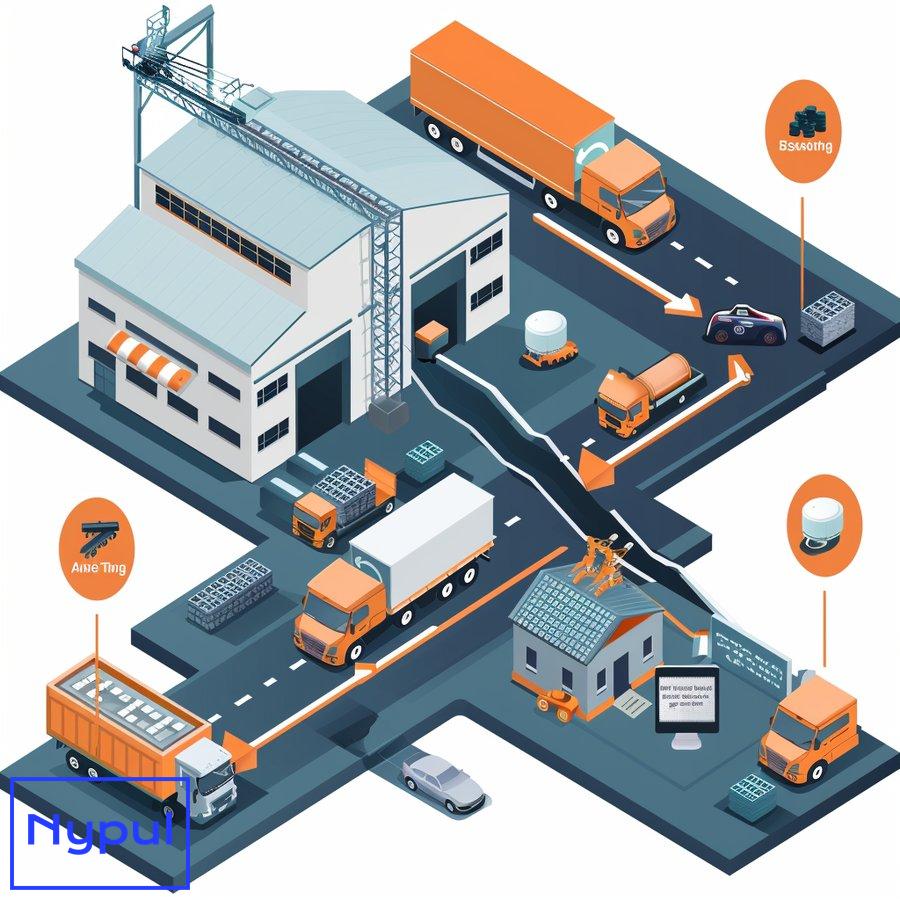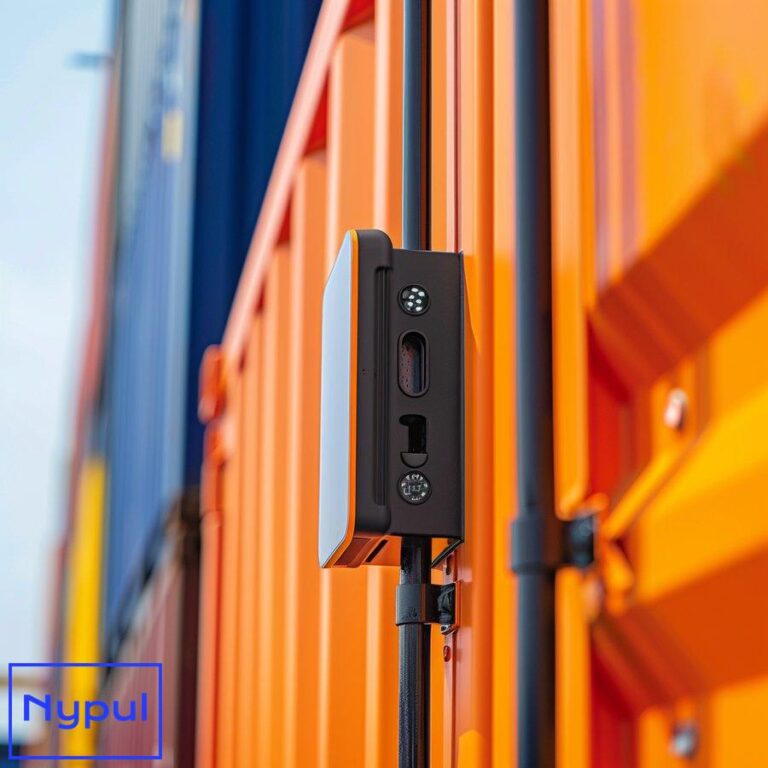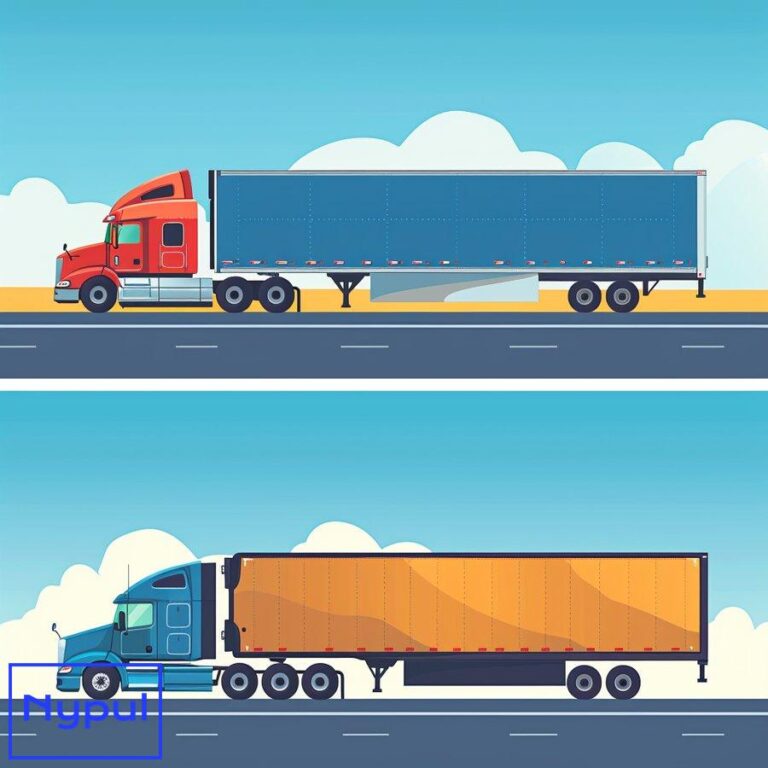What Is Intermodal Transport Document
What is an Intermodal Transport Document?
An intermodal transport document (ITD) serves as a crucial instrument in the logistics and shipping industries, facilitating the seamless movement of goods across different modes of transportation. This document encompasses essential details about the shipment, ensuring that all parties involved in the transport process are informed and coordinated.

Intermodal transport refers to the movement of cargo using two or more modes of transportation, such as trucks, trains, ships, and planes, without handling the cargo itself during transit. The ITD is pivotal in this process as it consolidates various transport contracts into a single document, streamlining the logistics chain.
Definition and Purpose
The primary purpose of the intermodal transport document is to provide a comprehensive overview of the shipment’s journey. It acts as a receipt for the cargo, a contract for the carriage of goods, and a document of title, which can be transferred to third parties. This multifunctionality enhances the efficiency of intermodal transport, allowing for better tracking and management of shipments.
Importance in Logistics
In logistics, the ITD plays a vital role in ensuring that all stakeholders, including shippers, carriers, and freight forwarders, have access to consistent and accurate information. This transparency minimizes the risk of errors and miscommunication, leading to smoother operations and improved customer satisfaction.
What are the Different Types of Intermodal Transport Documents?
Intermodal transport documents come in various forms, each serving specific purposes within the logistics framework. Understanding these types is essential for stakeholders to select the appropriate documentation for their shipping needs.
Bill of Lading (B/L)
The Bill of Lading is one of the most common intermodal transport documents. It serves as a contract between the shipper and the carrier, detailing the type, quantity, and destination of the goods being transported. The B/L can be negotiable or non-negotiable, affecting how ownership of the goods can be transferred during transit.

Multimodal Transport Document (MTD)
The Multimodal Transport Document is similar to the Bill of Lading but covers multiple modes of transport under a single contract. This document simplifies the process for shippers who use several carriers, providing a unified approach to managing their shipments.
Sea Waybill
A Sea Waybill is used primarily in maritime transport and serves as a receipt for the cargo. Unlike a Bill of Lading, it is non-negotiable, meaning that it cannot be transferred to another party. This document is often preferred for shipments where the consignee is known and there is no need for the transfer of ownership.
Air Waybill (AWB)
The Air Waybill is specific to air transport and functions as a contract between the shipper and the airline. It outlines the terms of carriage and provides essential information about the shipment, including weight, dimensions, and destination.
Intermodal Transport Document (ITD)
The Intermodal Transport Document itself is a comprehensive document that combines elements of the above documents, facilitating the movement of goods through multiple transport modes. It includes details from the Bill of Lading, Sea Waybill, and Air Waybill, ensuring that all necessary information is consolidated.
What Information is Contained in Intermodal Transport Documents?

Intermodal transport documents contain a wealth of information that is critical for the successful movement of goods. The details included in these documents can vary depending on the type of document used, but several key elements are consistently present.
Shipment Details
-
Description of Goods: This includes the type, quantity, and weight of the cargo being transported.
-
Packaging Information: Details about how the goods are packaged, including dimensions and container numbers.
-
Origin and Destination: The starting point and final destination of the shipment, including any intermediate stops.
Carrier Information
-
Carrier Names: The names and contact details of all carriers involved in the transport process.
-
Transport Modes: A breakdown of the modes of transport used (e.g., truck, rail, sea, air).
Contractual Terms
-
Terms of Carriage: Specific conditions under which the goods are transported, including liability clauses and delivery timelines.
-
Payment Terms: Information regarding freight charges, payment methods, and any applicable fees.
Legal and Regulatory Compliance
-
Customs Information: Details required for customs clearance, including harmonized system codes and country of origin.
-
Insurance Coverage: Information about insurance policies covering the shipment during transit.
Additional Information
-
Tracking Numbers: Unique identifiers that allow stakeholders to monitor the shipment’s progress throughout its journey.
-
Signatures and Dates: Confirmation of acceptance by the shipper and carrier, along with relevant dates for tracking purposes.
How Do Intermodal Transport Documents Differ from Single-Mode Transport Documents?
![]()
Intermodal transport documents differ significantly from single-mode transport documents in several key areas, primarily in their scope, flexibility, and operational efficiency.

Scope of Coverage
Single-mode transport documents, such as a Bill of Lading for a truck shipment, cover the transport of goods using one specific mode of transportation. In contrast, intermodal transport documents encompass multiple modes, providing a holistic view of the entire shipping process.
Flexibility
Intermodal transport documents allow for greater flexibility in logistics operations. They enable shippers to combine different transport methods to optimize routes and reduce costs. Single-mode documents, however, limit shippers to a single mode, which may not always be the most efficient option.
Operational Efficiency
Intermodal transport documents streamline the logistics process by consolidating various contracts and information into one document. This reduces the administrative burden on shippers and carriers, leading to faster processing times and fewer errors. Single-mode documents often require separate contracts for each leg of the journey, increasing the likelihood of miscommunication and delays.
Risk Management
Intermodal transport documents provide enhanced risk management by clearly outlining the responsibilities and liabilities of each carrier involved in the transport process. This clarity helps mitigate potential disputes and ensures that all parties understand their obligations. Single-mode documents may not offer the same level of detail regarding multiple carriers, leading to ambiguity in liability.
What are the Legal Aspects and Regulations Governing Intermodal Transport Documents?
The legal framework surrounding intermodal transport documents is complex, involving various international and national regulations that govern the movement of goods across borders and modes of transport.
International Regulations
Several international conventions and agreements govern intermodal transport, including:

-
The Hague-Visby Rules: These rules outline the rights and responsibilities of carriers and shippers in international shipping, particularly concerning the carriage of goods by sea.
-
The Convention on International Trade in Endangered Species (CITES): This agreement regulates the transport of endangered species and their products, impacting intermodal transport when such goods are involved.
-
The International Maritime Organization (IMO): The IMO establishes regulations for the safe and secure transport of goods by sea, including hazardous materials.
National Regulations
Countries have their own regulations that affect intermodal transport, including customs laws, safety standards, and environmental regulations. Compliance with these laws is essential for ensuring smooth operations and avoiding legal issues.
Liability and Insurance
Understanding liability in intermodal transport is crucial for shippers and carriers. The liability of each carrier involved in the transport process is typically governed by the terms outlined in the intermodal transport document. Insurance coverage is also a critical consideration, as it protects against potential losses or damages during transit.
Dispute Resolution
Dispute resolution mechanisms are often included in intermodal transport documents, outlining the procedures for addressing conflicts that may arise during the shipping process. This may involve arbitration or mediation, providing a structured approach to resolving issues without resorting to litigation.
How Do Intermodal Transport Documents Benefit Shippers and Carriers?
Intermodal transport documents offer numerous advantages for both shippers and carriers, enhancing the overall efficiency and effectiveness of the logistics process.
Benefits for Shippers
-
Cost Efficiency: Intermodal transport often results in lower shipping costs due to the combination of rail and truck services. Rail transport is generally more cost-effective for long distances, while trucks provide flexibility for last-mile delivery.

-
Improved Transit Times: By leveraging multiple transport modes, shippers can optimize routes and reduce transit times, ensuring timely delivery of goods.
-
Enhanced Visibility: Intermodal transport documents provide shippers with tracking capabilities, allowing them to monitor the status of their shipments in real-time.
-
Reduced Risk of Damage: The reduced handling of cargo during transit minimizes the risk of damage and loss, providing peace of mind for shippers.
Benefits for Carriers
-
Increased Capacity: Intermodal transport allows carriers to maximize their capacity by utilizing rail for long-haul segments, freeing up trucks for shorter distances.
-
Streamlined Operations: The consolidation of multiple contracts into one intermodal transport document simplifies the administrative burden for carriers, leading to more efficient operations.
-
Competitive Advantage: Carriers that offer intermodal services can differentiate themselves in the market, attracting shippers looking for cost-effective and reliable transport solutions.
-
Environmental Benefits: Intermodal transport is generally more environmentally friendly than traditional trucking, as it reduces carbon emissions and fuel consumption.
What Challenges Arise When Using Intermodal Transport Documents?
Despite the numerous benefits of intermodal transport documents, several challenges can arise during their use, impacting the efficiency of the logistics process.
Coordination Among Multiple Carriers
One of the primary challenges in intermodal transport is coordinating the activities of multiple carriers. Each carrier may have different operational procedures, leading to potential delays and miscommunication. Effective communication and collaboration among carriers are essential for overcoming this challenge.
Regulatory Compliance
Navigating the complex web of international and national regulations can be daunting for shippers and carriers. Ensuring compliance with customs laws, safety standards, and environmental regulations is crucial for avoiding legal issues and delays in the transport process.
Documentation Errors
Errors in intermodal transport documents can lead to significant disruptions in the logistics chain. Inaccurate information regarding shipment details, carrier names, or contractual terms can result in delays, fines, or even loss of cargo. Implementing robust quality control measures is essential for minimizing the risk of documentation errors.
Infrastructure Limitations
The effectiveness of intermodal transport relies heavily on the availability of adequate infrastructure, including rail networks, ports, and intermodal terminals. Insufficient infrastructure can lead to bottlenecks and delays, impacting the overall efficiency of the transport process.
Technological Integration
Integrating technology into intermodal transport operations can be challenging, particularly for smaller carriers and shippers. Implementing advanced tracking systems, data analytics, and automated processes is essential for improving efficiency but may require significant investment and expertise.
Digital Transformation of Intermodal Transport Documents
The digital transformation of intermodal transport documents is reshaping the logistics landscape, offering new opportunities for efficiency and innovation.
Electronic Documentation
The shift from paper-based documents to electronic documentation is revolutionizing the way intermodal transport operates. Electronic documents can be created, shared, and stored digitally, reducing the risk of errors and enhancing accessibility. This transition also streamlines the administrative processes associated with shipping.

Blockchain Technology
Blockchain technology is emerging as a powerful tool for enhancing transparency and security in intermodal transport. By providing a decentralized and immutable ledger, blockchain can facilitate real-time tracking of shipments, ensuring that all stakeholders have access to accurate and up-to-date information.
Data Analytics
The use of data analytics is becoming increasingly important in intermodal transport, allowing shippers and carriers to make informed decisions based on real-time data. Analyzing trends, performance metrics, and customer preferences can help optimize operations and improve service delivery.
Automation and Artificial Intelligence
Automation and artificial intelligence (AI) are transforming various aspects of intermodal transport, from route optimization to cargo handling. Implementing automated systems can enhance efficiency, reduce labor costs, and minimize the risk of human error.
Future Trends
The future of intermodal transport documents is likely to be shaped by ongoing advancements in technology and changing market dynamics. As the logistics industry continues to evolve, stakeholders must adapt to new trends and embrace innovative solutions to remain competitive.
The digital transformation of intermodal transport documents is not just a trend; it is a necessary evolution that will define the future of logistics. Embracing these changes will enable shippers and carriers to navigate the complexities of modern supply chains more effectively, ensuring the efficient movement of goods across the globe.






